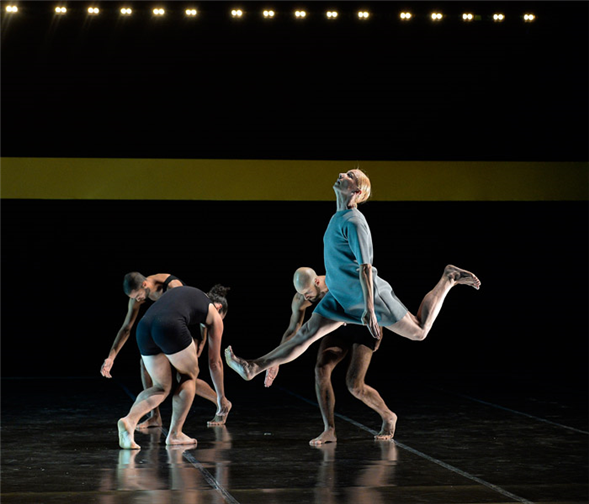Translate Page

Choreographer John Jasperse sees history (and the future) in his latest work
---
What's left behind after a dance is performed? Given the art form's notoriously ephemeral nature, how do long-gone dance events retain their impact and influence? Can one identify the remnants of a dance, as one can with a human body? These questions underscore Remains, an hour-long piece from choreographer John Jasperse that will be part of BAM's Next Wave Festival from September 21-24.
Continuing some of his career's major themes, Jasperse is using this work to examine the interactions among past, present, and future – exploring not only generational influences in dance, but also iconic imagery from the visual arts.
However, Remains isn't just a catalogue of what's come before. "I was very concerned with the piece not being about nostalgia, or not being about what's left over," Jasperse says. "I was interested in the title because, in part, it's a verb in the present tense, as well as [a reference to] artifacts that are left over. I thought it allowed for a different kind of feeling, or maybe invited the possibility that you could think about this word in multiple ways."
As both an idea man and a gifted shaper of movement, Jasperse has been part of the New York dance scene for over 25 years. His work has constantly evolved in that time, and he has considered – and even questioned – the role of a choreographer. For instance, in his 2007 trio Becky, Jodi and John, he performed alongside two fellow 43-year-olds in a work that focused on what it means to be a dancer beyond the initial burst of boundless, youthful energy.
{Image1}
In creating Remains, which was first performed at the American Dance Festival in July, Jasperse says, "It was interesting to me to embrace my connection to some of the things that as a younger artist I might have rejected: certain kinds of ideas about the body in early modernism. The whole romance that I had with complexity and articulation – when you see early modernist dances, the body is extremely unified, and even stripped of any kind of ornamentation. So that's very different from the post-Trisha Brown complexity that I would say was a big part of my very earliest work."
As he was thinking about his own evolving aesthetics, Jasperse was also drawn to ideas about Western art in general. "I was really looking at phenomena, or practices, or tropes, that kept coming back historically," he says. "Many of those images are embedded with a lot of problems. Art does not exist as dislocated from the culture; art comes out of the culture. So all of the problems of Western culture, in sourcing the Western canon, come right with it. All the issues of sexism, colonialism, imperialism are part of that canon."
Jasperse, who is also the director of the dance program at Sarah Lawrence College, wants audiences to see these connections between art and the rest of the world. "I have always seen artistic practice as inextricable from what it means to be a citizen of the world," he says. "I see it as deeply connected, as a practice that hopefully brings out attention into our present as co-habitants of our environment, this planet.
"So while I'm making work that many would describe as largely 'abstract,' I would like to think that the way in which I'm posing questions about perception, or connectivity, might invite critical thinking on the part of the viewer that I hopefully have engaged in while making the work."
---
TDF Members: At press time, discount tickets were available for Remains. Go here to browse our latest offers.
Susan Reiter regularly covers dance for TDF Stages
Photos by Grant Halverson. Top photo: A scene from 'Remains'